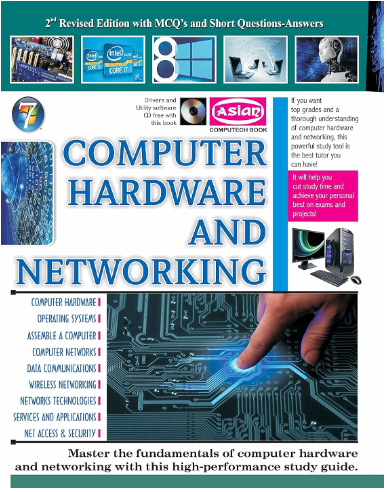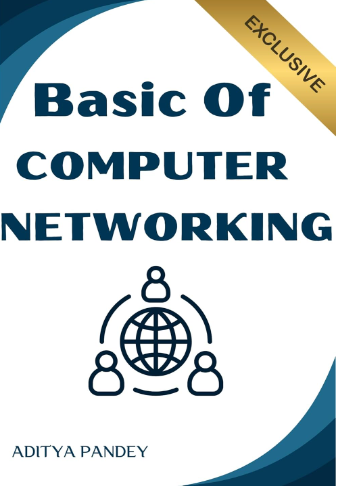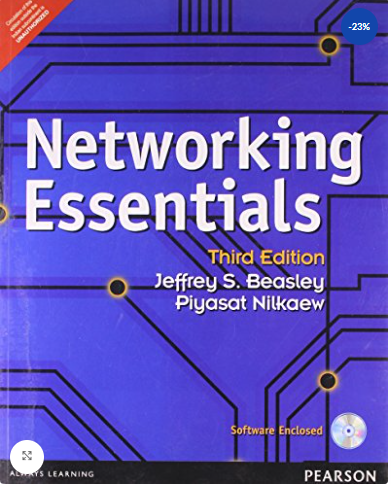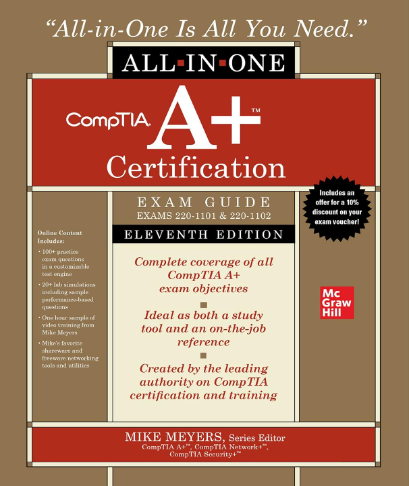Computer networking is the backbone of modern technology, enabling devices, systems, and users to communicate efficiently and share resources. Whether you are a beginner looking to understand the basics in computer networking or an experienced network engineer aiming to inproove your knowledge, the Best books on computer networking can prove to be a game-changer for you. The best computer networking books provide a structured way to learn networking concepts, protocols, and troubleshooting techniques. In this article, we will explore some of the best books available to learn computer networking, covering a range of topics from fundamental concepts to advanced networking principles
Data Communications and Networking
Data Communications and Networking, written by Behrooz A. Forouzan is a famous computer networking book that provides a clear and detailed introduction to computer networking and data communications. It covers basic concepts such as network models, protocols, transmission media, error detection, and network security. The book uses simple language and real-world examples to explain how data is transmitted between devices and how networks work. It includes illustrations, diagrams, and practice questions to help readers understand complex topics easily. Suitable for students and beginners, this book is widely used in universities and networking courses to build a strong foundation in computer networks.
Computer Networks: A Top-Down Approach
Computer Networks: A Top-Down Approach networking book written by Behrouz A. Forouzan is a detailed and easy-to-understand book on computer networking book. It follows a top-down approach, starting with real-world applications and gradually exploring deeper networking concepts like protocols, network layers, security, and wireless communication. The book uses simple language, diagrams, and real-world examples to explain complex networking topics. It is designed for students and beginners who want a clear and structured way to learn how networks function. With practical exercises and case studies, this book helps readers build a strong foundation in networking concepts.
Computer Networking: Mastering in Computer Networking
Computer Networking: The Beginner’s Guide for Mastering Computer Networking” by Ramon Nastase is a simple and easy-to-follow book designed for beginners who want to learn computer networking. It covers essential topics such as network basics, IP addressing, network security, wireless networking, and troubleshooting. The book explains complex concepts in a clear and practical way, making it ideal for students, IT beginners, and anyone looking to understand how networks work. With step-by-step explanations, real-world examples, and practical tips, this book helps readers build a strong foundation in networking and apply their knowledge in real-life situations.
| What Is A Computer Network | Introduction Of Networking Device |
| Introduction Of Topology | Introduction Of OSI Model |
Computer Networks
Computer Networks book written by Andrew S. Tenenbaum is a widely used book that explains the principles of computer networking in a simple and detailed manner. It covers essential topics such as network architecture, protocols, data transmission, security, and the Internet. The book uses real-world examples and easy-to-understand language to help readers understand complex networking concepts. It also discusses how modern networks work, including wired and wireless communications. With clear explanations, diagrams, and case studies, this book is ideal for students, professionals, and anyone interested in learning how computer networks work.
Networking All-in-One for Dummies
Networking All-in-One for Dummies” written by Doug Lowe is a beginner-friendly book that provides a complete guide to computer networking. It covers essential topics such as setting up a network, troubleshooting, security, wireless networking, cloud computing, and the latest networking technology. The book explains complex concepts in a simple and easy to understand way, making it perfect for students, IT professionals, and anyone who wants to learn networking from the beginning. With step-by-step instructions, practical tips, and real-world examples, this book helps readers create, manage, and secure networks effectively.
Computer Networking, 8e
Computer Networking, 8th Edition written by James F. Kurose and Keith W. Ross is a well-structured book that explains computer networking concepts in an easy to understand manner. It follows a top-down approach, starting with real-world applications such as the Internet and moving deeper into networking layers, protocols, and technologies. The book covers important topics such as network security, wireless networks, multimedia networking, and cloud computing. With real-world examples, illustrations, and exercises, it helps students and professionals build a strong foundation in networking. This book is widely used in universities and is ideal for those who want a clear and practical understanding of computer networks.
COMPUTER HARDWARE & NETWORKING (2ND ED.)
Computer Hardware & Networking (2nd Ed.)” by A Panel of Authors is a practical book that covers the basics of computer hardware and networking. It explains how computer components work, how to assemble and troubleshoot a PC, and how networks are set up and maintained. The book also covers important networking topics like IP addressing, network security, and wireless communication. Written in simple language with step-by-step instructions, diagrams, and practical examples, this book is ideal for students, beginners, and anyone interested in learning about computer hardware and networking in an easy and structured way.

Basic Of Computer Networking: Best Book for Freshers
Basic of Computer Networking: Best Book for Freshers” by Aditya Pandey is a beginner-friendly book that introduces the fundamentals of computer networking. It explains key concepts such as network types, protocols, IP addressing, network security, and data communication in simple and easy-to-understand language. The book is designed for students, freshers, and anyone new to networking who wants a clear and straightforward introduction. With step-by-step explanations, real-world examples, and practical insights, this book helps readers build a strong foundation in computer networking basics.

Elements of Computer Networking
Elements of Computer Networking” by Narasimha Karumanchi is a well-structured book that explains the core concepts of computer networking in a simple and easy-to-understand way. It covers important topics such as network protocols, IP addressing, data transmission, network security, and troubleshooting. The book is designed for students, job seekers, and IT professionals preparing for interviews, as it includes practical examples and common networking questions. With clear explanations, diagrams, and real-world scenarios, this book helps readers build a strong foundation in computer networking and understand how networks function in the real world.
Networking Essentials 3Rd Edition
Networking Essentials, 3rd Edition” by J.S. Beasley is a beginner-friendly book that covers the fundamental concepts of computer networking. It explains topics like network types, protocols, IP addressing, wireless networking, and network security in a simple and easy-to-understand way. The book includes practical examples, diagrams, and step-by-step instructions to help readers grasp complex networking concepts. It is ideal for students, IT beginners, and professionals who want to learn the basics of networking and how networks function in real life. With clear explanations and hands-on exercises, this book provides a strong foundation for understanding computer networks.

CompTIA Network+ Certification All-in-One Exam Guide
This book is a comprehensive Networking Book for anyone preparing for the CompTIA Network+ (N10-008) certification exam. Written by Mike Meyers, a well-known expert in IT certification training, the book covers all the essential networking concepts, including network architecture, security, troubleshooting, and wireless technologies. It provides clear explanations, real-world examples, practice questions, and practical exercises to help learners understand networking in a practical way. The book is well-structured and easy to follow, making it useful for both beginners and professionals who want to refresh their knowledge.

Conclusion
Choosing the right networking book depends on your level of knowledge and your goals. If you’re a beginner, books like Forouzan’s “Data Communications and Networking” or Kurose and Ross’s “Computer Networking: A Top-Down Approach” are excellent starting points. For professionals, books like “Network Warrior” and “Practical Packet Analysis” provide practical knowledge. Regardless of your level of experience, these books will help you gain a solid understanding of computer networking concepts and prepare you for certification or real-world networking challenges.
Recommended Articles
- Difference Between Public and Private IP Address?
- What is Localhost? Uses, Benefits, and How to Set It Up
- SSH Full Form: What is Secure Shell and How Does It Work?
- What is MPLS? Types, Benefits, Uses, and How It Works
- Top 10 Best Networking Certifications for IT Professionals
- Top 10 Best Books on Computer Networking for IT Professionals
- SNMP Full Form: What is Simple Network Management Protocol?
- ARP Full Form: What is Address Resolution Protocol?
- Uses of Computer Network in Daily Life
- Top 20 Highest Salary Jobs : Lucrative Careers with Best Salaries - 5 April 2025
- Types of Operating System (OS): Features,Types And Uses - 5 April 2025
- 15 Features of Operating System You Should Know - 4 April 2025



















